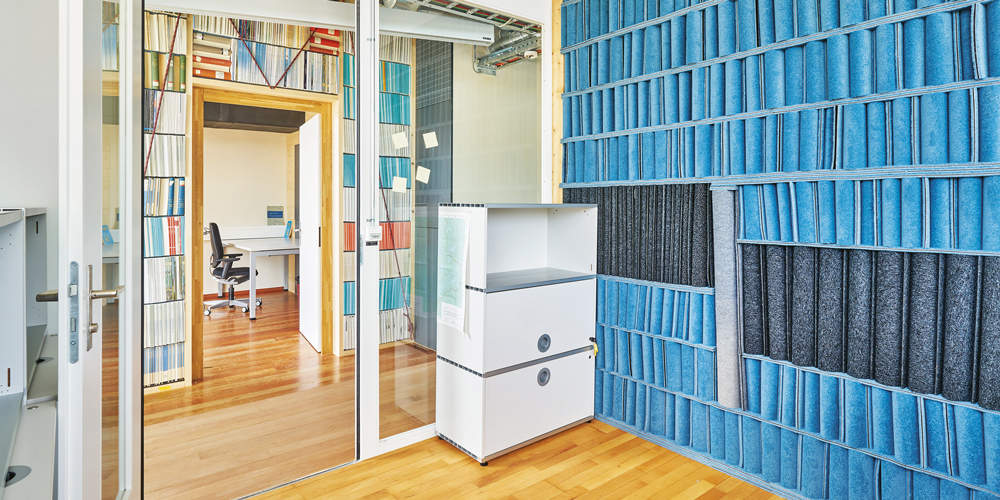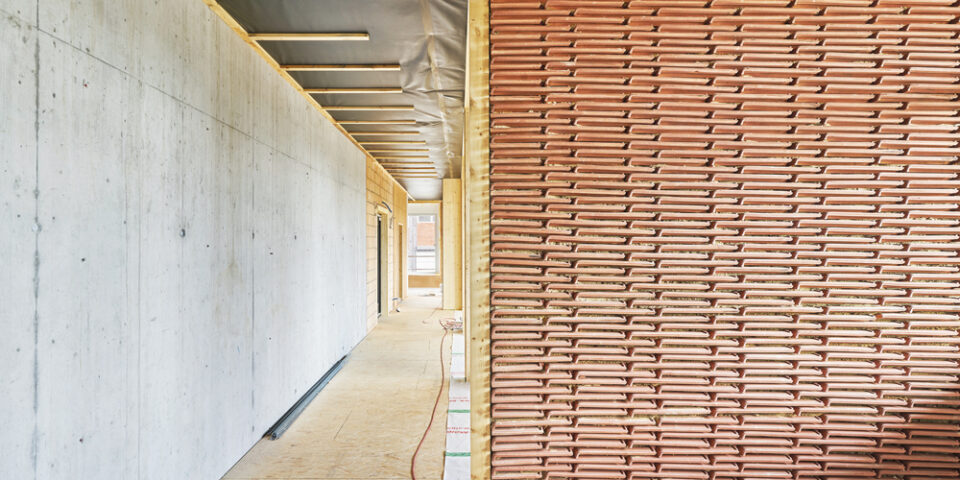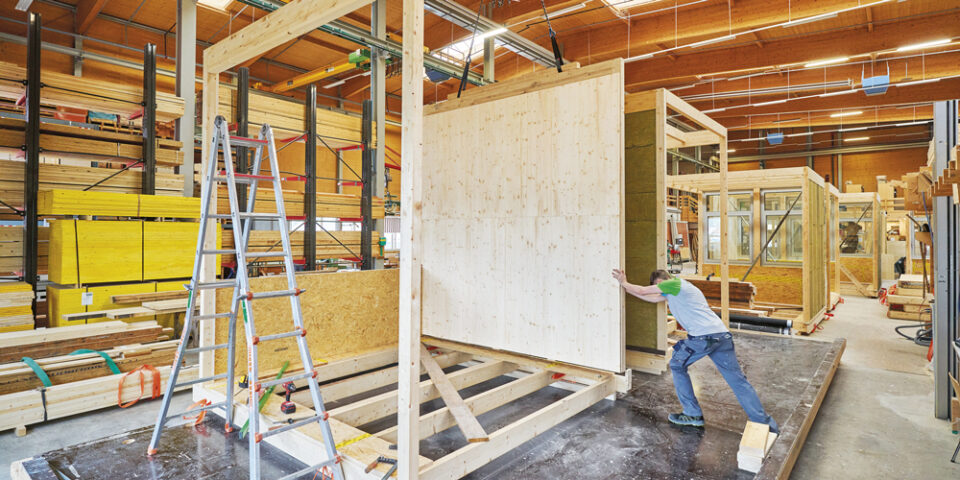New NEST unit sprint: demolition, departure, breakthrough

The Sprint unit was opened in the NEST research and innovation platform in August 2021. The unit demonstrates that building with reused materials meets market requirements and can lead to creative solutions.
The new NEST unit Sprint offers 200 square meters of office space made mostly from reused materials and components. Partitions made of different materials that can be flexibly removed divide the office unit into twelve individual offices. The unit was built on the lowest platform of the NEST building, the research and innovation platform of Empa and Eawag. It took only ten months from the ground-breaking ceremony to the opening.
The entire sprint unit follows the “Design for Disassembly” approach. Their design already takes dismantling into account, and their construction facilitates future modifications and dismantling to recover components and materials. In this way, the premises can be efficiently transferred to another cycle at the end of their service life.
The sprint unit wants to find solutions that are as universal as possible and thus simplify the reuse of building materials. The project is a collaboration between various actors from research, business and the public sector. During the construction and subsequent use of Sprint, the opportunities and challenges of the reuse process are continuously documented and compiled – with the aim of making the construction more marketable. The sprint unit shows that building with reused materials and components is a viable alternative to building with new material that meets the market requirements for flexible and fast building.
Building with reused materials is a step-by-step approach – the issue of available materials runs through the whole process. This requires, among other things, a rethinking of planning and execution, a flexible schedule and flexibility in design. For example, the material found also determines the final design. Sprint shows “that reused material is by no means a hurdle for the design, but that creativity can be used to achieve design elements that you would not have originally thought of,” says Oliver Seidel, architect and member of the management board at baubüro in situ AG. An example are the different partition walls. Some are built from scrap bricks, some from old books, and still others from old carpet.
The reuse of materials is not necessarily cheaper in today’s market situation. However, Seidel is convinced: “As soon as a competitive market with reused materials and components has been established, there will also be cost advantages with reuse.” In addition, certain reused materials such as natural stone or automatically closing fire protection doors would suddenly become affordable, in contrast to the same components made of new material.

